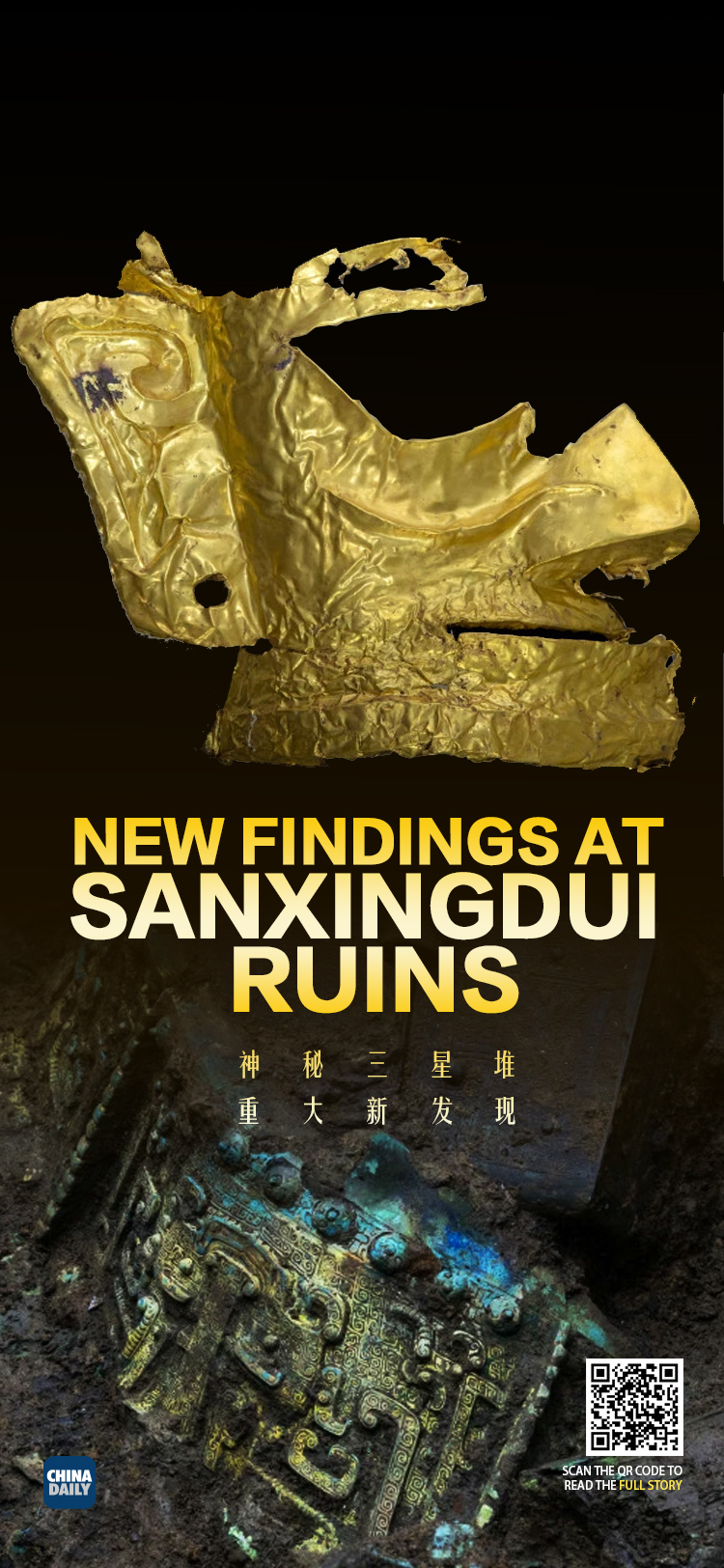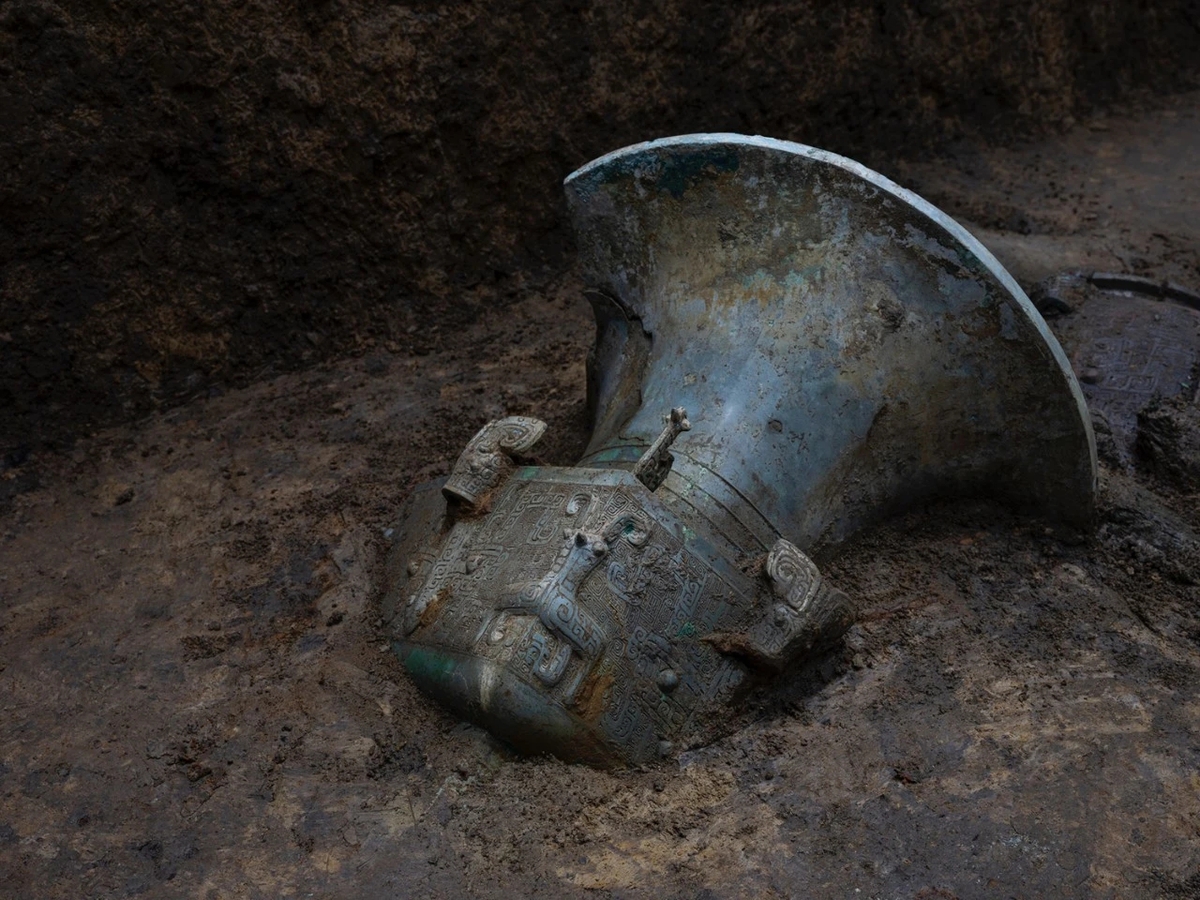
Six “sacrificial pits”, dating back 3,200 to 4,000 years, were newly discovered in Sanxingdui Ruins site in Guanghan, Southwest China’s Sichuan province, as per a news conference on Saturday.
Over 500 artifacts, including gold masks, bronzewares, ivories, jades, and textiles, were unearthed from the site.
Sanxingdui site, first found in 1929, is generally considered as one of most important archaeological sites along the upper reaches of the Yangtze River. However, large-scale excavation on the site only began in 1986, when two pits — widely believed for sacrificial ceremonies — were accidentally discovered. Over 1,000 artifacts, featuring abundant bronzewares with exotic appearances and gold artifacts indicating power, were found at that time.
 A rare type of bronze vessel zun, which has a round rim and a square body, is among the items newly unearthed from Sanxingdui site.
A rare type of bronze vessel zun, which has a round rim and a square body, is among the items newly unearthed from Sanxingdui site.
Post time: Apr-01-2021
